Azerbaijan, Georgia, and Armenia, three small countries in the Caucasus, all gained independence from the Soviet Union at the same time. Before this trip, I expected that Baku, Tbilisi, and Yerevan, their three capital cities, would all be more or less similar in nature and appearance.
I couldn’t have been more wrong.
About this post
I normally try to blog as I go, but during the last part of my time in the Caucasus, I was on the go so much that I didn’t find time to post updates.
I also try to chronicle my daily activities while traveling. But instead, now that I’ve been home a few weeks, I’m offering a series of posts to summarize some of the things I learned and experienced while I was in Azerbaijan, Georgia, and Armenia.
Baku…
…is a polished, modern city. The small walled historic center, the Old City (in Azerbaijani, Icherisheher), a UNESCO World Heritage Site, dates from at least the 12th century, possible as far back as the 7th century. The area glows, almost literally, with the results of careful restoration. Buildings darkened from decades of pollution gleam brightly. Any new construction within the Old City is completely in keeping with the historic architectural style.

Outside the Old City are glass towers and some of the most astonishingly modern architecture anywhere. While remnants of Soviet-era construction still exist, mainly in outlying areas, new, modern apartments and office buildings have replaced most of them. At night it is all brightly and colorfully lit.

Baku is also the cleanest city I’ve ever visited. I didn’t see so much as a cigarette butt on the ground. Workers were even picking up autumn leaves faster than they were falling, and they were sweeping and hosing down broad pedestrian arcades.

Here are all my photos of Baku.
Tbilisi…
…is full of charm, but it never feels like it’s putting on a show. Old Tbilisi is a maze of narrow cobbled streets lined with a mix of old and not-so-old buildings. There was never any attempt to preserve anything there, and historic and newer buildings sit side-by-side all over the “old town.” Old Tbilisi could never be on any UNESCO list.
And yet, it works. In a lot of respects, it works better than Baku (at least it did for me as a visitor), because it feels more authentic, more laid back, more comfortable. Baku’s Old City is a place you want to walk through and admire the pretty buildings. Old Tbilisi is a place you want to hang out, drink wine, and watch people.
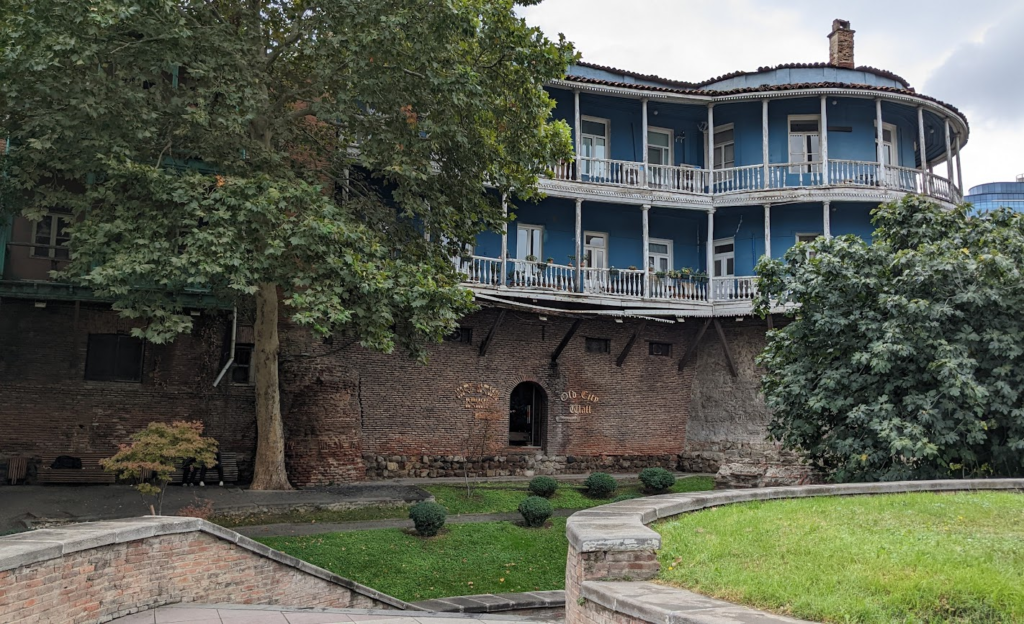




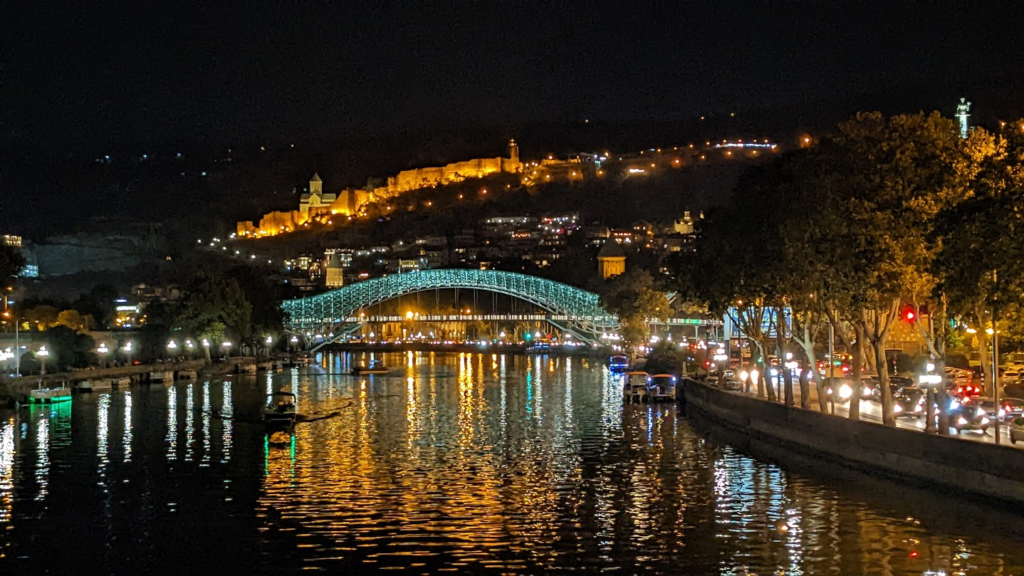
Outside Old Tbilisi, there is plenty of new construction. There are also a lot of houses, once magnificent and now sadly run down, from the nineteenth century, when Tbilisi experienced a golden age as part of Imperial Russia.



I came away from Tbilisi both delighted and saddened. Such a lovely city, and yet how depressing to have such a wonderful architectural legacy left to fall into decrepitude.
Here are my photos of the “faded glory” of Tbilisi.
And here are the rest of my photos of Tbilisi.
Yerevan…
…has no old town. I didn’t see anything in the city that predated the nineteenth century. In fact, there is an old district called Kond. But Hasmik didn’t take me there or even mention it, though it is not far from where we did our walking tour. From what I’ve read, Kond is a neighborhood filled with abandoned or neglected buildings, torn up streets, and a lack of basic services. I don’t think there’s anything of historical interest to see there as a tourist. I understand there have been discussions about revitalization projects, which so far have gone nowhere.
Instead of doing that, Yerevan’s revitalization has taken place in the center, an area (where I stayed) filled with upscale apartments and shopping, plazas and parks with fountains, and government offices.
The architect Alexander Tamanian (1878–1936) created the original plan for Yerevan’s center. Approved in 1924, his plan was to transform Yerevan from a small provincial city to a modern capital and center of industry and culture. His stylistic approach was based on neoclassicism, but he incorporated local materials such as tuff and basalt.
One feature of Tamanian’s design was a pedestrian avenue cutting diagonally through the center. But the Soviets never implemented it. Finally in 2002, construction began, and Northern Avenue today is a busy area filled with upscale shops, apartment buildings, and open public spaces. Buskers perform at nearly every corner.
Yerevan’s Northern Avenue has a lot in common with Baku’s Nizami Street. Both are bustling pedestrian thoroughfares with a definite upscale character. The buildings lining Nizami Street are three or four stories tall, compared to an average of nine stories along Northern Avenue, but the feeling on both streets is the same.
Hasmik told me most locals are very unhappy with how the look of the center has changed since the end of the Soviet era. The taller buildings have meant more congestion, and in general people just don’t like the way they look.
My impression, though, was positive. The new buildings, other than being taller, blend in well with the older style. New and old seem to complement each other. Unlike Baku, which wholeheartedly embraced modernism, contemporary Yerevan seems to respect the spirit of Tamanian’s vision.




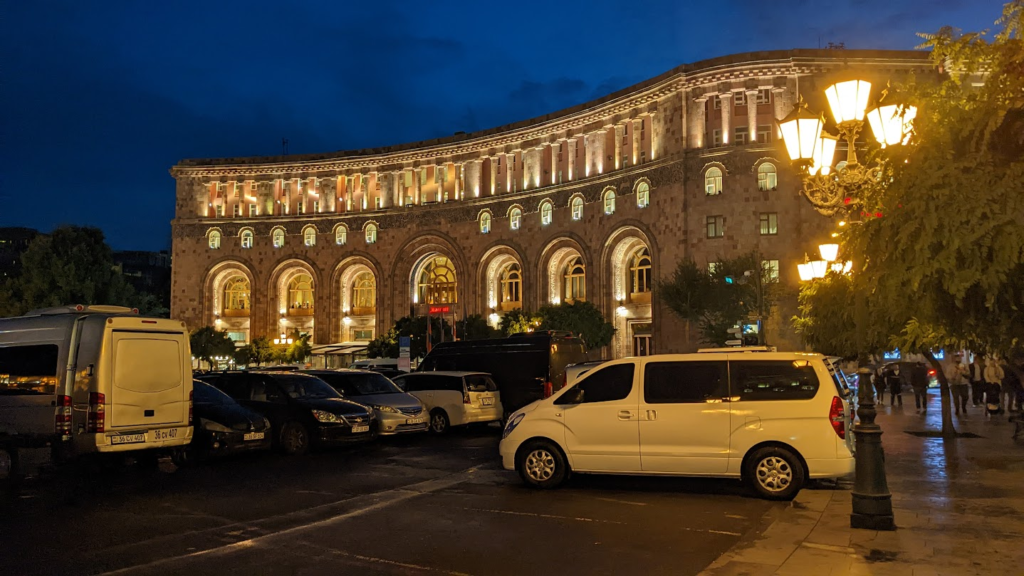
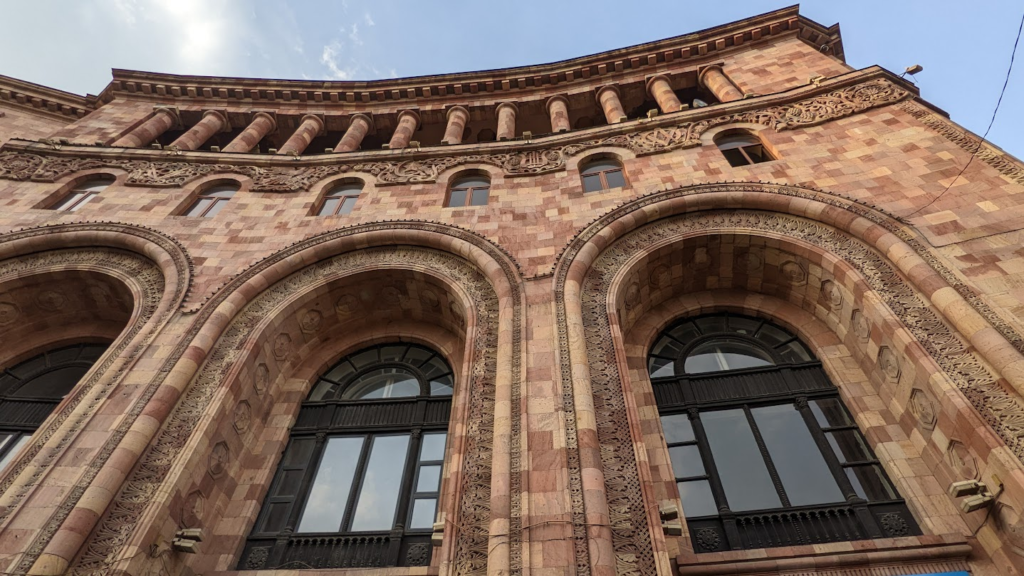

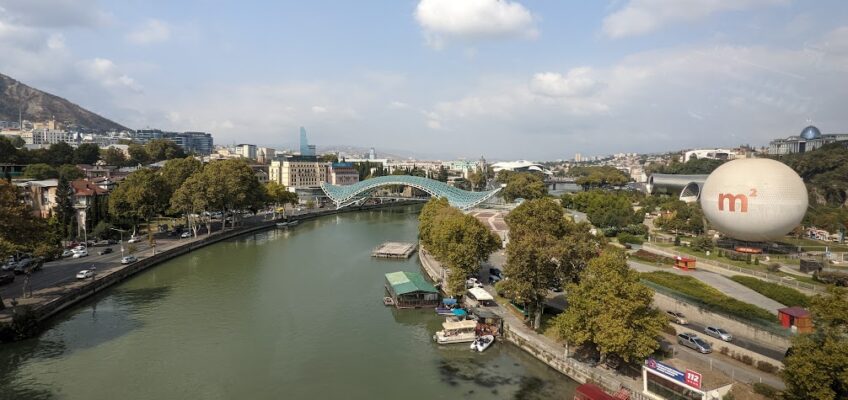











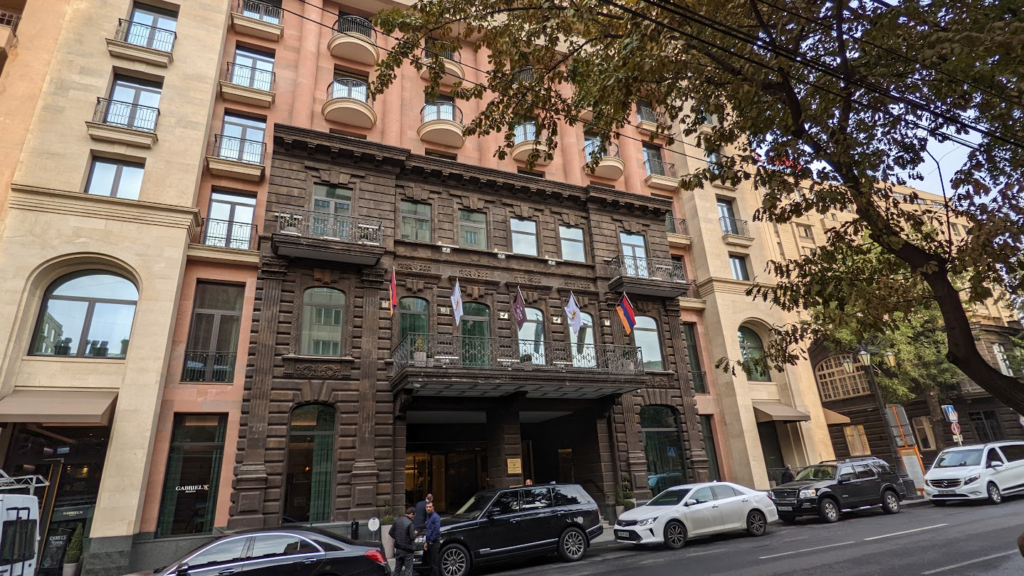
Charles Chartier
Luv you blog
Lane
Thanks Charles!
Shelley E
thanks for posting Lane — a marvelous trip — and for me, a history lesson. I had no idea this area of the world was so fascinating — and now have aquired several books about the area trying to learn more about that area’s history -
Lane
Thank you Shelley.
If you’re interested in reading about this region, I recommend “The Caucasus: An Introduction” by Thomas de Waal. This is the book I read (well, parts of) before my trip to get a good overview of the history of the region.
Timothy
Thanks for the recap. My feelings about the three cities were the same. Welcome home.
Lane
Thanks Tim, and thank you for the fabulous preview you gave me, and for all the tips.
Zaur Aliyev
If Baku has old city and modern buildings how it becomes “completely embrasing modernism” in compare to Irevan when Irevan does not even have old buildings ( not soviet era, but really old)? Why you did not ask where is the old town of Ireva? It was still there in 1936,but was destroyed afterwards on purpose.
Lane
Thanks for your comment. I wish I had asked about the old town in Yerevan. I would have like to see it.
As for Baku “completely embracing modernism,” the architectural style of new buildings in Baku is vastly different from anything I saw in Yerevan. The new construction in Yerevan seems to be giving a nod to traditional architectural styles. In Baku I saw many buildings (like the Flame Towers and the Aliyev Center) that are thoroughly modernistic.
Jan Hough, TE Tours
Great post on a fascinating, if sadly mostly unknown, part of the world. I’ve been a few times and your impressions closely correlate with mine… thank you! Will be taking a small group tour there again in April 2023… Jan Hough
Lane
Jan, thank you so much for your comment. I hope you have a great trip in April.